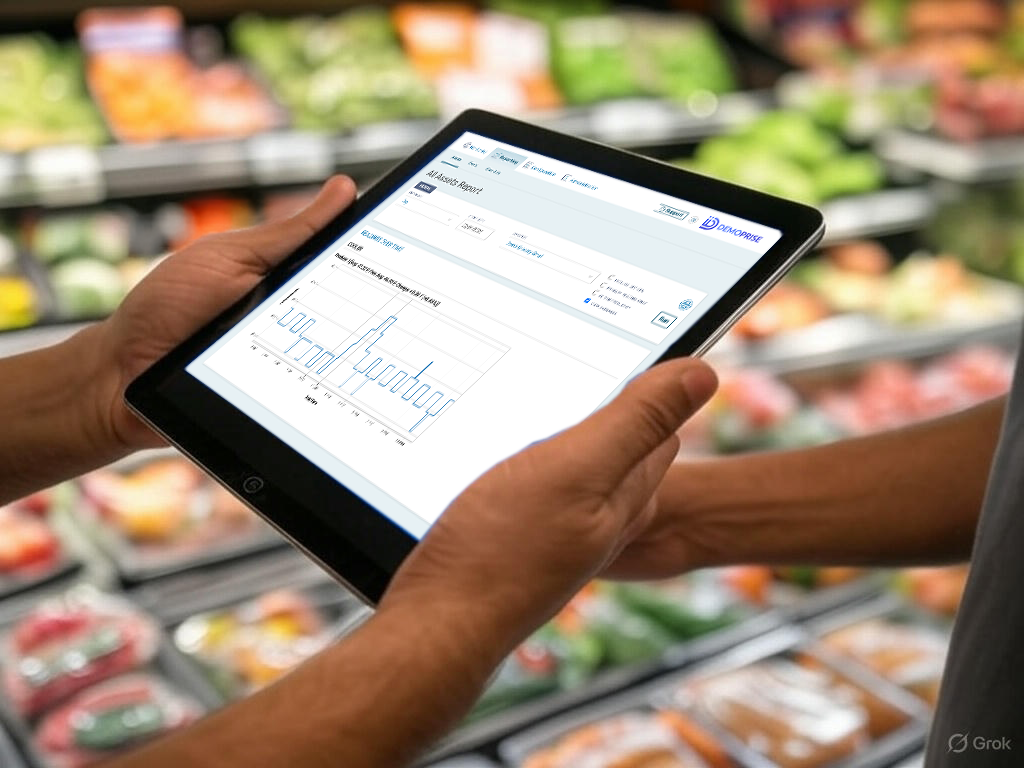
Picture yourself stepping into a bustling supermarket or a cozy convenience store. The air hums with anticipation as you reach for a crisp apple, a piping-hot pizza slice, or a chilled beverage. You expect freshness, flavor, and quality—every time. For food retailers, delivering that promise across multiple locations is no small feat. Temperature swings, human slip-ups, and operational hiccups can spoil the experience, leaving behind wasted food, safety concerns, and disappointed customers. But what if there’s a way to turn those challenges into opportunities? Data-driven insights have become a remarkable tool helping supermarkets and convenience stores maintain exceptional food quality.
Customers expect more. They crave restaurant-quality meals from their local grocer, consistent taste in every sandwich or hotdog no matter the store, and the assurance that every bite meets strict safety standards. Relying on outdated manual checks or unreliable systems makes consistency a gamble. A single overlooked temperature spike, a fridge on the fritz, or a slow reaction to a problem can spiral into spoiled goods, costly recalls, and a hit to the bottom line. Data-driven solutions flip that script, empowering operators with real-time intelligence to stay ahead of the curve.
Where Data-Driven Insights Make the Biggest Impact
Small sensors can be perfectly placed in refrigerators, freezers, and bunkers tracking every temperature change in real time. When a unit drifts out of range for a specified period of time, an alert pings the team, giving them the chance to act before quality takes a hit. Ditch the days of scribbled paper checklists that end up in a three-ring binder that no one ever looks at. Digital tools now guide staff through every critical task—logging temps, ensuring proper storage—with precision and accountability. And it doesn’t stop there. By tapping into historical data and sensor readings, predictive analytics can spot a refrigerator’s early warning signs, scheduling repairs before a breakdown wipes out thousands in inventory.
Beyond the equipment, your data paints a more vivid picture. Trend analysis reveals hidden inefficiencies in storage or handling, spotlighting patterns that lead to waste. Armed with this knowledge, operators are able to tweak processes with confidence, cutting losses and boosting efficiency. Take a regional supermarket chain that saved upwards of $200,000 thanks to catching refrigeration failures early with real-time monitoring. Or a food distributor that needed to prove their cold chain to return a product to a vendor. Even a national bottler swapped their outdated method of temperature collection for certainty, using automated alerts to secure confidence in their temperature data, ensuring product safety and regulatory compliance.
Data = Better Food, Less Waste, and Higher Profits
The future of food is where technology turns data collection and analysis into a superpower for the industry. With cutting-edge digital tools lighting the way, businesses have the ability to tap into a treasure trove of insights from every corner of the production process. Picture small sensors and the tiny guardians in freezers, bunkers and delivery trucks—collecting temperature and humidity data in real time. This steady stream of information ensures every apple stays crisp, every pizza stays hot, and every beverage stays chilled, locking in quality and safety from farm to shelf.
But it’s not just about keeping food fresh—it’s about staying on the right side of the rules. Food safety regulations demand a paper trail, and smart data practices deliver. From tracking where ingredients come from to nailing every step of production and quality control, businesses weave a web of meticulous records. This isn’t just red tape—it’s a lifeline. When trouble brews, those details let operators pivot fast, tackling safety hiccups with precision. It’s compliance with a bonus: the power to protect customers and keep trust rock-solid.
The payoff is clear: consistent quality that customers can see, less waste cluttering the landfills, and compliance that doesn’t hinge on human memory. Plus, dodging equipment disasters saves money—money that can fuel growth instead of repairs. This isn’t just about meeting regulations; it’s about crafting a food experience that keeps loyal customers coming back.
Implementing technology for data collection and analysis
OpSense ties it all together. From automating temperature checks and collecting data for compliance to providing reports that help make sense of all the data, it’s a one-stop solution for supermarkets, convenience stores, and distributors. With data as the backbone, foodservice businesses aren’t just surviving—they’re thriving, delivering fresh food, smarter operations, and happier customers. In a world where every bite counts, data-driven insights are the ingredient no retailer can afford to skip.If you and your team are ready to automate temperature monitoring and gain peace of mind that you’ll always be audit ready, schedule some time to speak with our professionals about how OpSense can help your operation.